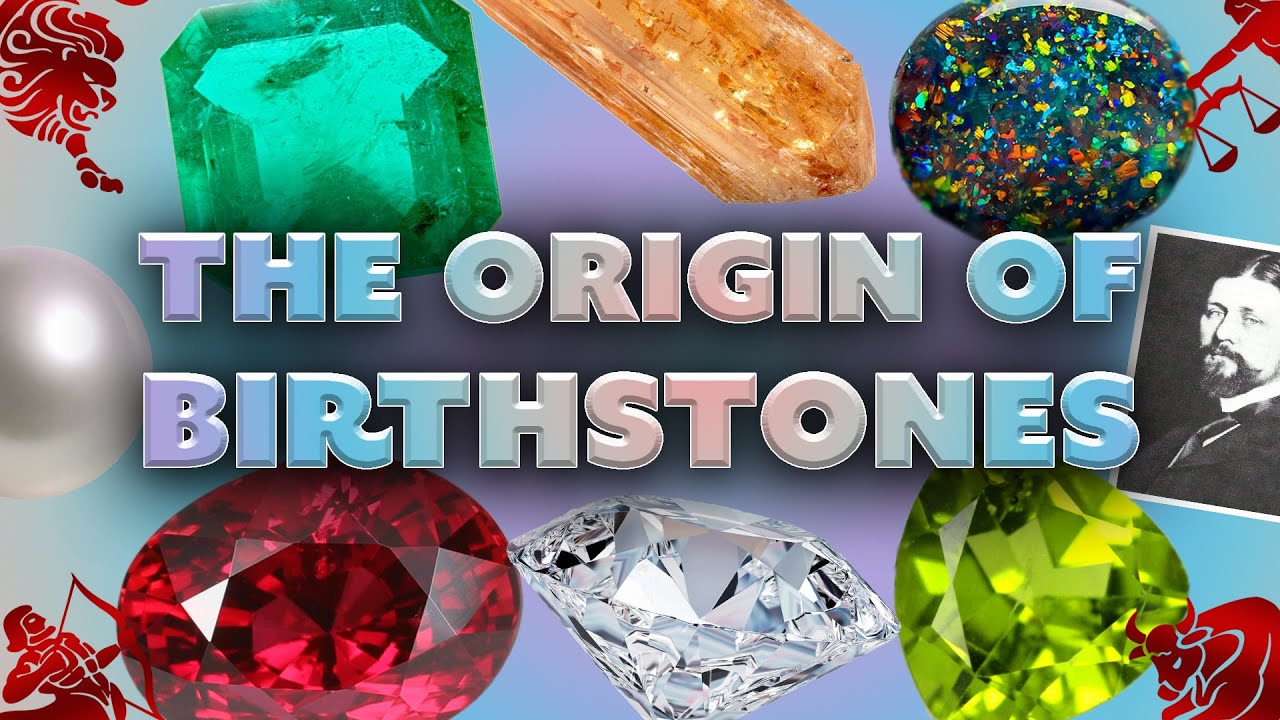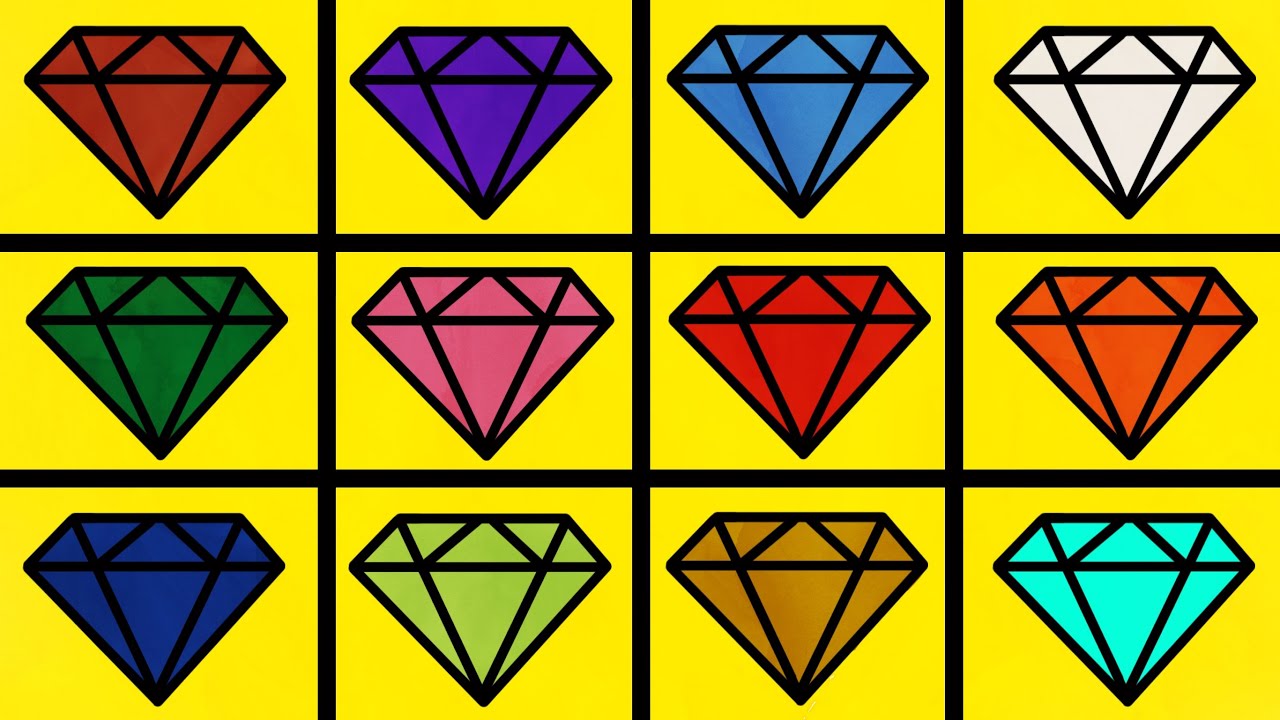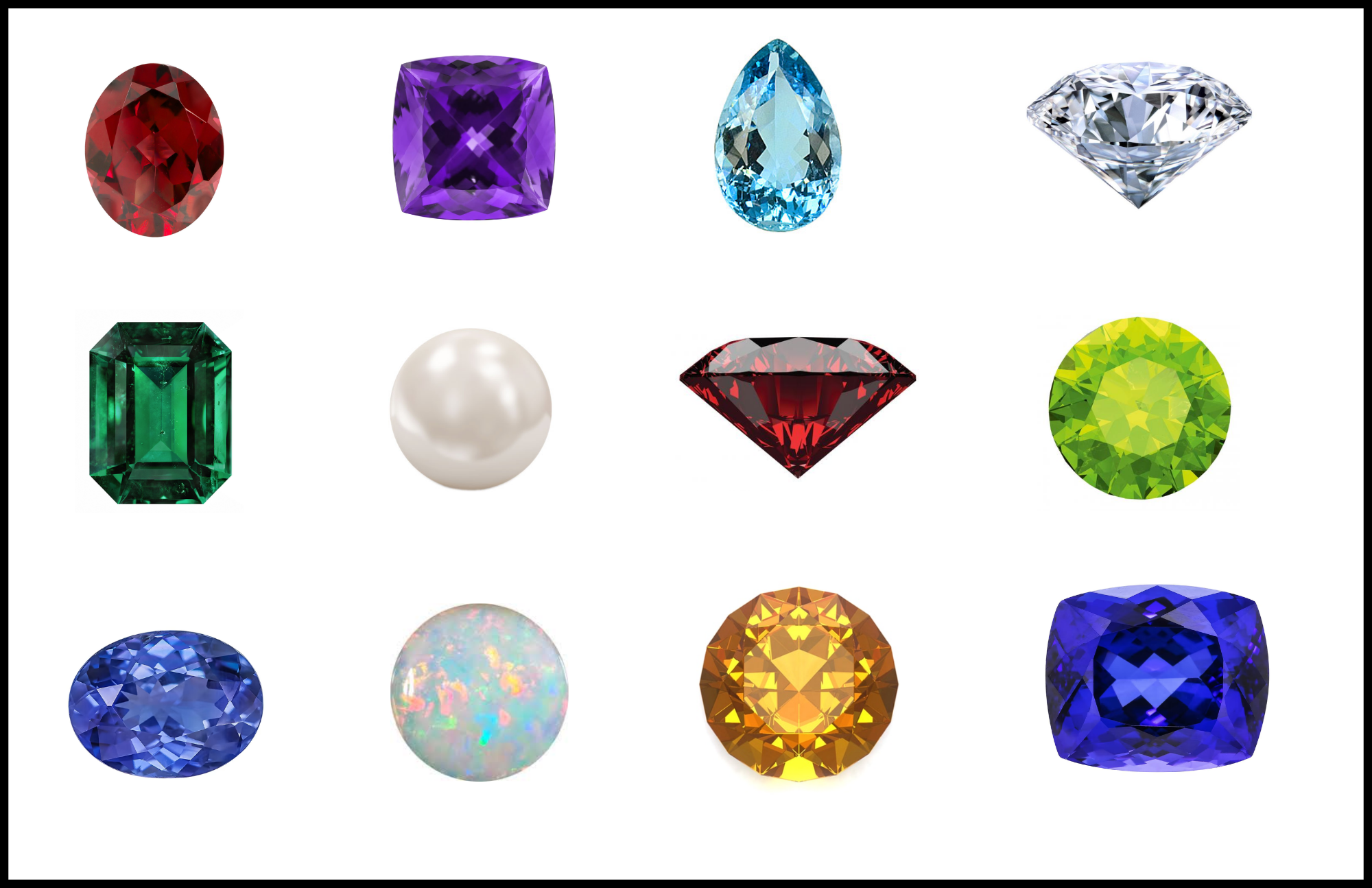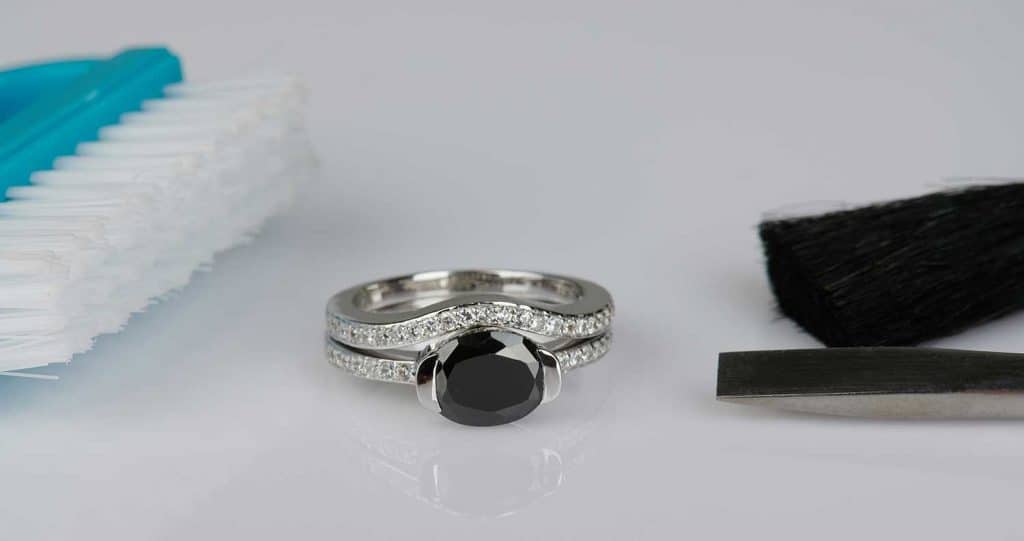A traditional birthstone chartis a useful tool for those who want to find the perfect gemstone to wear based on their month of birth.
This chart lists gemstonesfor each month and can help people make informed decisions about which gemstone to choose based on their personal preferences or beliefs.
In this article, we are going to explore the history of birthstones, how birthstones are chosen, and the gemstones associated with each month.
The History Of Birthstones
Birthstones have been associated with different meanings and powers since ancient times.
The idea of birthstones dates back to the Bible, where it is said that Aaron, the high priest of the Israelites, wore a breastplate with twelve precious stones, each representing one of the twelve tribes of Israel.

Where Did Birthstones Come From?
In the first century, a Jewish historian named Josephus wrote about the twelve stones in Aaron’s breastplate and linked them to the twelve signs of the zodiac.
Over time, people began to associate birthstones with specific months, and the idea of a traditional birthstone chartwas born.
The first official birthstone chart was created in 1912 by the American National Association of Jewelers and has since become a popular way for people to choose gemstones.
Choosing Birthstones
The process of choosing birthstones involves a combination of tradition, folklore, and personal preference.
Many people believe that wearing a birthstone can bring good luck or positive energy into their lives. Some also choose birthstones based on their astrological sign, which is said to influence personality traits and behavior.
Gemstones associated with each month have varied over time and by culture, but today there are standardized lists used by jewelers and gemstone sellers around the world.
Gemstones By Month
According to birthstone.me, these are the traditional birthstone chart that lists the gemstones associated with each month. Check them along with some of their properties:
| January: Garnet | Protection, strength, health |
| February: Amethyst | Clarity, tranquility, spiritual awareness |
| March: Aquamarine | Courage, serenity, creativity |
| April: Diamond | Strength, purity, eternity |
| May: Emerald | Loyalty, love, success |
| June: Pearl or Moonstone | Wisdom, protection, emotional balance |
| July: Ruby | Passion, love, energy |
| August: Peridot | Protection, healing, growth |
| September: Sapphire | Wisdom, truth, spiritual insight |
| October: Opal or Tourmaline | Creativity, inspiration, emotional healing |
| November: Topaz or Citrine | Positivity, abundance, good health |
| December: Turquoise | Happiness, success, protection against negative energy |
Modern Variations On Traditional Birthstones
While traditional birthstones have remained relatively consistent over time, there are many modern variations and alternatives available today.
These variations can offer new ways to connect with birthstones, express individuality, and explore different properties and energies. Here are a few examples of modern variations on traditional birthstones:
- Alternative Birthstones:In addition to classic birthstones, many jewelers offer alternative birthstones based on zodiac signs, numerology, or other factors. For example, those born under the sign of Leo might choose to wear a birthstone like peridot or sardonyx, even though their traditional birthstone is ruby.
- Lab-Created or Synthetic Gemstones:Advances in technology have made it possible to create gemstones that look and feel almost identical to natural ones. Many jewelers offer lab-created or synthetic birthstones as a more affordable and ethical alternative to mined gemstones.
- Personalized Birthstone Jewelry:Some jewelers offer custom birthstone jewelrythat allows you to choose multiple birthstones or mix and match different gemstones. This can be a great way to create a piece of jewelry that reflects your unique personality and style.
- Birthstone-Inspired Colors:If you're not a fan of traditional birthstone colors, you can still incorporate birthstone-inspired hues into your wardrobe or home decor. For example, those born in November might incorporate topaz-inspired shades of yellow or goldinto their clothing or interior design.
- Non-Traditional Gemstones:Finally, there are many non-traditional gemstones that can be associated with different birth months, based on their energetic or metaphysical properties. For example, those born in February might choose to wear a gemstone like rose quartz, which is associated with loveand compassion, even though amethystis their traditional birthstone.
Incorporating modern variations on traditional birthstones can be a fun and creative way to connect with these ancient symbols and energies.
Whether you opt for an alternative birthstone, lab-created gemstone, or personalized birthstone jewelry, there are many ways to make birthstones a meaningful part of your life.
Birthstones In Different Cultures And Traditions

How Gemstones/Birthstones Got Their Names
While the modern birthstone chart has its roots in ancient Western civilizations, many cultures and traditions around the world have their own systems of birthstones or gemstone associations. Here are a few examples of birthstones from different cultures:
- Hindu Birthstones:In Hindu tradition, each of the nine planets is associated with a specific gemstone that can influence a person's destiny. For example, those born under the influence of Venus might wear a diamondor white sapphire, while those influenced by Saturn might wear a blue sapphire or amethyst.
- Ayurvedic Birthstones:Ayurveda is a system of traditional medicine that originated in India, and it also has its own system of gemstone associations. According to Ayurveda, each gemstone corresponds to a specific chakra or energy center in the body. For example, emerald is associated with the heart chakra and can promote healing and balance.
- Chinese Birthstones:In Chinese astrology, each year is associated with one of twelve animals, and each animal is associated with a specific gemstone. For example, those born in the Year of the Tiger might wear a sapphire or aquamarine, while those born in the Year of the Rabbit might wear a pearl or moonstone.
- Native American Birthstones:Many Native American cultures have their own system of gemstone associations, based on the natural materials found in their region. For example, turquoiseis considered a sacred stone in many Native American cultures, and it is often associated with protection, healing, and good luck.
- Jewish Birthstones:In the Jewish tradition, each of the twelve tribes of Israel is associated with a specific gemstone, based on a description in the Book of Exodus. For example, the tribe of Judah is associated with the garnet, while the tribe of Dan is associated with the sapphire.
Exploring the different birthstone traditions from around the world can be a fascinating way to learn about different cultures and spiritual practices.
Whether you choose to incorporate birthstones from your own cultural tradition or explore new gemstone associations, these ancient symbols can offer a connection to the natural world and the energies that surround us.
Care And Maintenance Of Traditional Birthstone Jewelry
Birthstone jewelry is often treasured for its beauty and significance, and with proper care and maintenance, it can last a lifetime. Here are some tips for keeping your traditional birthstone jewelry in great condition:
- Store jewelry properly:When not being worn, store your birthstone jewelry in a dry, cool place, such as a jewelry boxor pouch. Avoid storing it in direct sunlight or near sources of heat, as this can damage the gemstones.
- Clean regularly:To keep your birthstone jewelry looking its best, clean it regularly with a soft, damp cloth. For more stubborn dirt or grime, use a mild soap or jewelry cleaner specifically designed for the type of gemstone in your jewelry.
- Avoid harsh chemicals: Harsh chemicals, such as bleach or chlorine, can damage or discolor many types of gemstones. Avoid wearing your birthstone jewelry while swimming, bathing, or cleaning with chemicals.
- Be gentle:Some birthstones, such as opals, pearls, and emeralds, are delicate and can easily be scratched or damaged. Be gentle when handling and wearing your birthstone jewelry, and avoid exposing it to rough surfaces or activities that could cause damage.
- Have it professionally cleaned:If your birthstone jewelry is particularly dirty or has been subjected to heavy wear and tear, consider taking it to a professional jeweler for deep cleaning or repairs. They can also help advise you on the proper care and maintenance of your birthstone jewelry.
By following these care and maintenance tips, you can ensure that your traditional birthstone jewelry stays looking beautiful and meaningful for years to come.
People Also Ask
What Are Traditional Vs Modern Birthstones?
Traditional birthstones are the stones associated with each month in the early 1900s. The Jewelers of America chose modern birthstones in the 1950s and updated them on a regular basis.
What Is The Traditional Birthstone Chart?
The traditional birthstone chart is a list of gemstones that are associated with each month of the year. It is said that wearing the gemstone associated with your birth month can bring good luck, protection, and other benefits.
What Do Birthstones Symbolize?
Birthstones are believed to have symbolic and metaphysical meanings that can vary depending on the gemstone and the culture. Some common themes include protection, healing, prosperity, love, and wisdom.
Can You Wear A Birthstone That Is Not Yours?
Absolutely! While it's traditional to wear the birthstone associated with your own birth month, there are no hard and fast rules. Many people choose to wear birthstones that they simply like the look of, or that have a special meaning to them.
What Is The Oldest Birthstone?
Zircon is the Earth's oldest mineral, datingback more than 4.4 billion years. It is common in most sand and sedimentary deposits, as well as metamorphic rocks and crystallized magma, and is found in the Earth's crust.
Conclusion
A traditional birthstone chart can be a fun and meaningful way to choose a gemstone to wear based on your month of birth. Whether you believe in the powers of birthstones or simply appreciate the beauty of these colorful gems, there is a birthstone for everyone.
By using this chart, you can explore the unique properties of each gemstone and find the one that resonates with you the most.
Whether you choose to wear your birthstone as a piece of jewelry or keep it in your pocket as a talisman, it can be a source of comfort and inspiration in your daily life.


